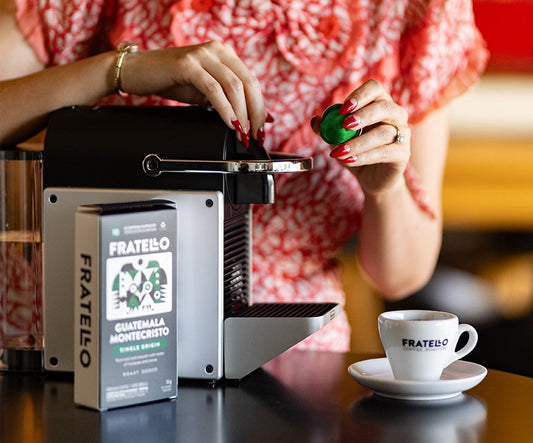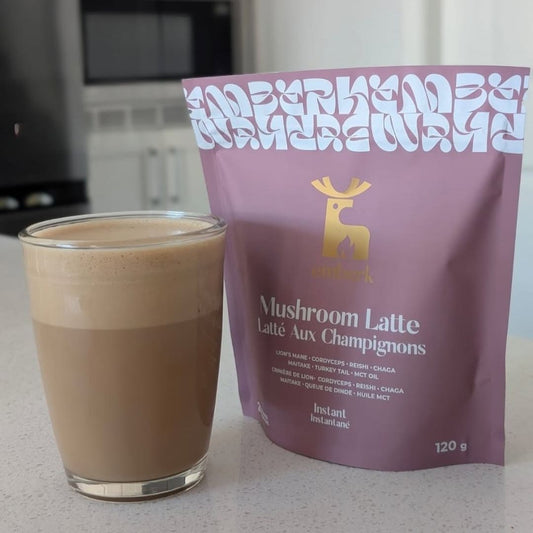Unlocking Profitability : The Ultimate Guide to Cafe Financial KPIs

In the bustling world of the food and beverage industry, particularly in cafes, unlocking profitability is a critical aspect that can make or break your business. At Fratello Coffee Roasters, we’ve observed what makes cafes successful over the past 38 years of helping cafes open and run their businesses. Understanding and effectively managing key financial KPIs can provide you with a clear picture of your cafe’s financial health and guide your decision-making process. This ultimate guide to cafe financial KPI’s will delve into the essential KPIs that every cafe owner should monitor and how to use them to drive your business towards success.

Key Financial KPIs for Cafes
There are several key financial KPIs that you should monitor while managing a cafe. These include:
- Sales: This is perhaps the most important financial KPI to track. You’ll want to keep an eye on how much revenue your cafe is generating, and how that figure changes over time.
- Cost of Goods Sold (COGS): This is the total cost of producing your menu items. It includes the cost of ingredients, labor, and other direct costs associated with serving your customers. To understand your COGS, you need to keep accurate periodic inventory. You can use your COGS data to analyze your actual vs theoretical (AvT) food costs. The variance between the two represents lost profit because of wasted inventory or mistakes1.

- Gross Profit: This is your sales minus your COGS. It represents the profit you’re making on each sale.
- Operating Expenses: These are the ongoing costs of running your business, such as rent, utilities, and marketing.
- Net Profit: This is your gross profit minus your operating expenses. It represents your overall profitability.
- Customer Acquisition Cost (CAC): This is the total cost of acquiring a new customer, including marketing and sales expenses.
- Customer Lifetime Value (CLV): This is an estimate of the total value that a customer will bring to your business over the course of their lifetime.
- Prime Cost: Your biggest restaurant expenses—food and labor costs—make up your prime cost. A good target for prime cost is to decrease it from an example of 68% to 64% over the next six months.
By tracking these KPIs, you’ll be able to better understand the financial health of your cafe and make informed decisions about how to grow and improve your business.

Managing Employee Costs
One of the significant components of cafe operating costs is employee costs. Here are some strategies to help manage your employee costs:
- Track your labor costs as a percentage of sales: This will give you an idea of how much you’re spending on labor relative to your overall revenue. On average, most restaurant businesses target a labor cost percentage between 25-35% of sales.
- Monitor your labor productivity: By tracking how much your employees are producing per hour, you’ll be able to identify any bottlenecks or inefficiencies in your operations.
- Set labor budget goals: By setting specific targets for your labor costs, you’ll have a clear benchmark to aim for and will be able to track your progress over time.
- Review your staffing levels: Make sure you have the right number of employees to meet customer demand without overstaffing.
- Offer training and development opportunities: By investing in your employees, you can increase their productivity and efficiency, which can help reduce your labor costs in the long run.
- Address Employee Turnover: High turnover is expensive for your restaurant. The cost of replacing an employee covers everything like recruiting, hiring, onboarding, training, and a development period.
By tracking and managing these KPIs, you’ll be better equipped to control your employee costs and make informed decisions about how to allocate your resources.

Effectively Scheduling Employees
As a business owner, you know your most important asset is your employees. However, you also know that they can be your most expensive expense. That’s why it’s important to make sure you know how to schedule employees effectively and efficiently.
Here are a few tips to help you get started:
- Determine your staffing needs: Think about how many employees you need during each shift and what tasks they will be responsible for. Make sure to consider factors such as the expected level of customer traffic and any special events or promotions you have planned.
- Communicate with your employees: Clearly communicate your schedule to your employees in advance and ask for their availability. This will help you create a schedule that works for everyone.
- Use scheduling software: Scheduling software can make it easier to create and manage employee schedules. There are many options available, ranging from free and basic to paid and feature-rich. With 6 cafe locations, we had great experience utilizing Seven Shifts as a way to have open communication with team members on when we required coverage, and when they would have time available.
- Consider labor laws: Be aware of any labor laws that apply to your business, such as minimum wage and overtime rules. Make sure you are complying with these laws when creating your schedules.
- Be flexible: Finally, be willing to be flexible and make changes to the schedule as needed. Things like unexpected employee absences or a sudden increase in customer traffic may require you to make adjustments on the fly.

Conclusion
Managing cafe finances is a complex task, but with a clear understanding of your financial KPIs, you can make strategic decisions that drive cafe revenue growth. Remember, the goal is not just to increase sales but also to enhance customer satisfaction and loyalty, which in turn increases the customer lifetime value. By focusing on these KPIs and using them to guide your decision-making process, you can ensure the long-term success and profitability of your cafe.
Remember, the key to successful financial management in your cafe is understanding your numbers, making data-driven decisions, and continually adapting to the changing business environment. So, start tracking these KPIs today and take control of your cafe’s financial future.



